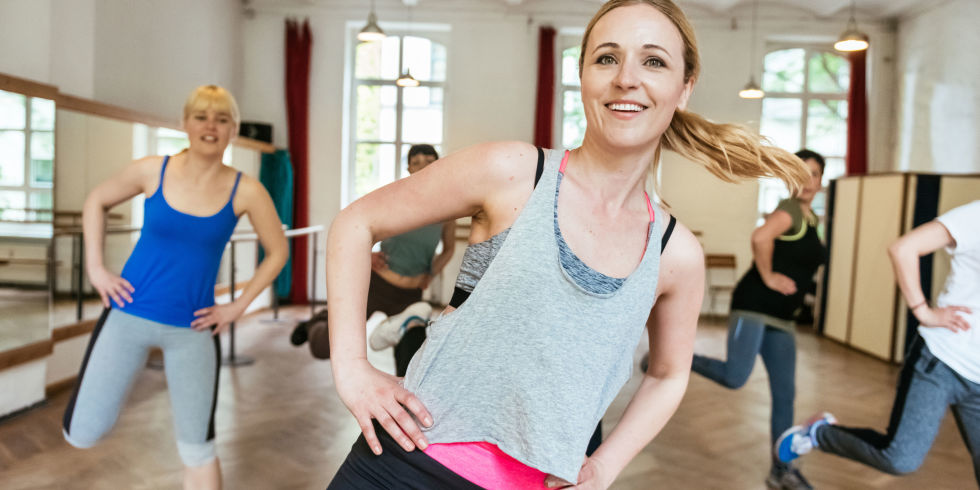You’re lacing up trainers regularly, shunning post-work drinks for your scheduled gym session and you’re still not getting any faster, fitter or stronger. Unfair is an understatement. We’re here to save the day if you’re not seeing the gym results you’re after…
1. You’re not following a plan
A plan is key to achieving and maintaining results. It enables you to schedule exercise sessions into a busy routine without leaving that Monday evening workout to chance. You can also check at-a-glance if you’re ticking all the fitness boxes. It’s easy to let areas such as stretching slip if you leave planning until the last minute, and this could have a knock-on effect to the rest of your routine.
Beat that barrier: Plan your weekly routine at the weekend, when you have a bit of breathing space to figure out what to do, when. Hurriedly scanning your diary on your Monday commute to find time for some higher intensity exercise may make it seem overwhelming, but giving yourself the space on a Sunday to review when you’re most likely to have the energy for that session can make a varied routine seem more manageable.
2. Variety is the spice of life (and the answer to all your fitness prayers)
If you found running initially ticked both fitness and weight loss boxes, only to find a few months in that you’re not getting the same results, don’t be surprised. Everything from your cardiovascular system to your calf muscles need new stimulus in order to become more effective and conditioned.
Beat that barrier: Look at all areas of your routine, from the exercises you do with your resistance routine to the speeds you’re selecting on the treadmill, and keep mixing them up. Try different methods of weight training – include your weights as part of a circuits routine, or try drop sets to challenge muscle fibres in a different way. If you’re stuck in a running rut, you’ll be amazed at how exhilarating and effective a spinning or swimming challenge can be.
3. Rest days aren’t getting a look-in
Not getting enough rest can have a surprising effect on your results. As the body struggles with an overload of physical stress, you may well see a decrease in performance and results, and possibly even an increase in injuries.
Beat that barrier: Two rest days a week should be a bare minimum for anyone regularly exercising. If you’re very active and an experienced exerciser, you can consider active recovery days which could be a slow paced yoga class or a walking workout but there’s really no harm in putting your feet up on a regular basis.

4. Rewarding yourself with food
You can replenish vital macronutrients after your hard work – a protein shake with a banana; hummus and pitta, or yoghurt with fresh berries make for great, nutritious post-workout fuel, but rewarding yourself for that 40-minute stint on the cross trainer with a muffin is counter-productive, particularly if you’re trying hard to get that figure on the scales to shift. At best, you’ll have broken even.
Beat that barrier: If you like a treat after you’ve earned your sweat minutes, be a bit creative. Treat yourself to a protein-based smoothie with a little peanut butter and banana. The fat and sugar of the fruit will make it feel indulgent but it’s a nutritious snack that will help you and your muscles recover well, plus it contains the right amount of calories and nutrients to help you avoid post-exercise hunger pangs.
5. You’re not working as hard as you think
Gauging exercise intensity can be tricky, particularly when you’re starting out. You need to know how hard you’re supposed to be working when you start out on each exercise session. If it’s a tough tempo you’re after, knowing what a ‘comfortably hard’ pace should feel like is important.
Break that barrier: Don’t shy away from using additional kit to get the best results. A heart rate monitor will highlight whether your hard H.I.I.T session in fact resembles a gentle warm up, and it will soon tell you if your brisk Sunday walk really does double-up as a ‘proper’ workout.
6. You’re not moving enough outside of the gym
If we could insert a sad face here, we would. Feeling like a right nag, we’re duty bound to tell you that even if you’re attending your favourite, sweatiest class twice weekly, if that’s all you’re doing it may take longer to see results, particularly if weight management is a goal.
Break that barrier: Every little really does help when it comes to exercise. The evidence for everyday exercise being effective for getting you fitter is big. Set yourself daily targets of 10-15 minutes of ‘incidental exercise’: take multiple sets of stairs over the course of the day; vary your walking speed as much as possible, and squeeze in discreet body weight exercises when you can (sets of squats before you lose your shoes for the night; a set of crunches and shoulder bridges on waking). These activities take minutes but their cumulative effect is not to be underestimated.












